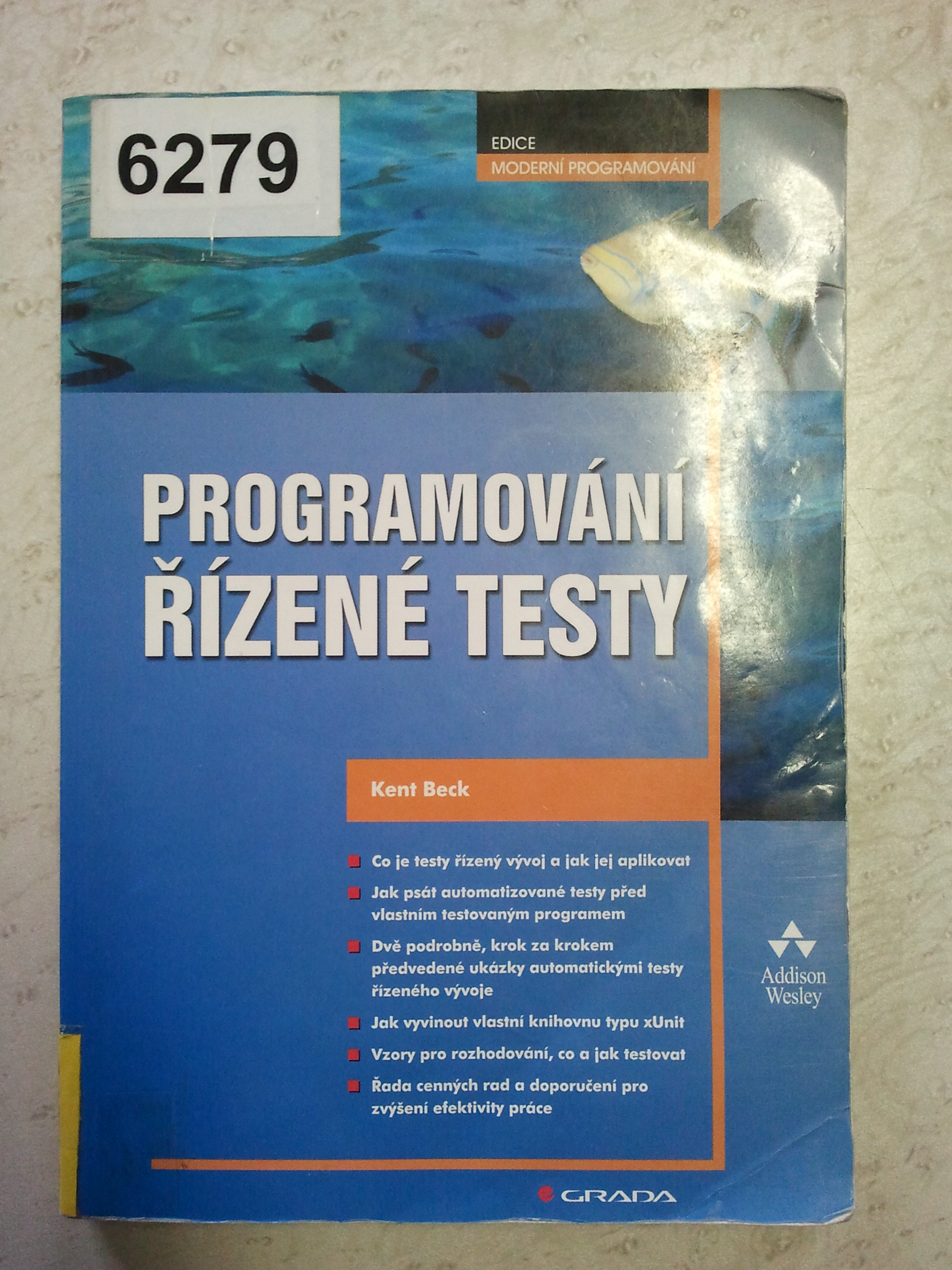Test Driven Development

Another book from my huge TOREAD pile is Test Driven Development: By Example from Kent Beck.
I learned about this method of development from the Extreme Programming book (also from Kent Beck) and I tried to take advantage of it during the coding phase of my thesis for bachelor’s. It’s a great way to develop software! Having your software covered by unit tests, you are way more confident with it. Along with this comes an assurance, that you didn’t break some part of your software when you add or change something. Without proper testing (either regression or unit) you just try stuff and see what happens. And it’s usually accompanied by glass shattering sounds and echoes of screaming people.
There is a metaphor (according to Steve McConnell in Code Complete) for software development that describes the process as drowning in tar pits with dinosaurs. I was a bit skeptical towards this metaphor at first, but it’s damn accurate when you code, but don’t test.

What exactly can you find in the book? In the first hundred pages, Mr.
Beck explains test driven development on a case study of WyCash - some
software that handles money. It’s a step-by-step (and by step I mean really
small steps) guide through the whole process. To be honest, I didn’t like this
part of the book. It explains how exactly TDD should be done, but it’s sooo
annoying to read about copying methods from one place to another and replacing
return 5; by return x+y; .
The second part gets a little more interesting. It’s about xUnit
- the family of widely used frameworks
for unit testing (sUnit for Smalltalk, jUnit for Java, CppUnit for
C++ etc). In this part, you will learn how the framework works with test cases,
test suits and fixtures, the setUp() and tearDown() methods etc. Kent Beck
is actually the original author of sUnit, the first framework from this family,
so all information you get here comes directly from the source. He actually
explains how to implement such a framework using TDD method.
And the last part covers TDD method in general, answers some questions that might spring to mind, usage of design patterns together with TDD and explains some situations you might find yourself in while using test driven development method.
Red-Green-Refactor
I’d like to point out one last principle - the Red-Green-Refactor. It’s a sort of mantra that will guide you through the whole book. It explains pretty much the whole routine of TDD in three steps (but you have to read the book to understand it properly!).
- Write a test - a test for some new functionality, that will obviously fail (hence the red sign)
- Make it work - write as little code as possible to make the test execute correctly (copy some code, fake the implementation, whatever, just make it work, turn the red to green)
- Refactor - at this point, the functionality is already done, so let’s focus only on the quality of design and implementation
It’s surprisingly easy, but extremely powerful, if you think about that in broader terms. I definitely recommend this book, maybe along with the Extreme Programming from the same author.

